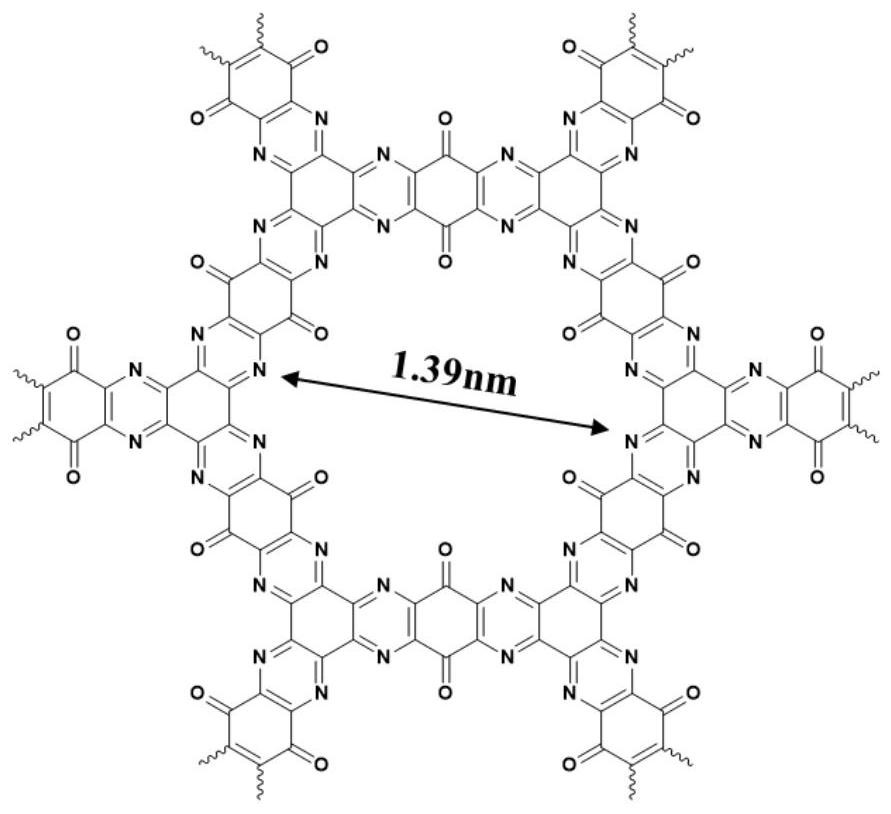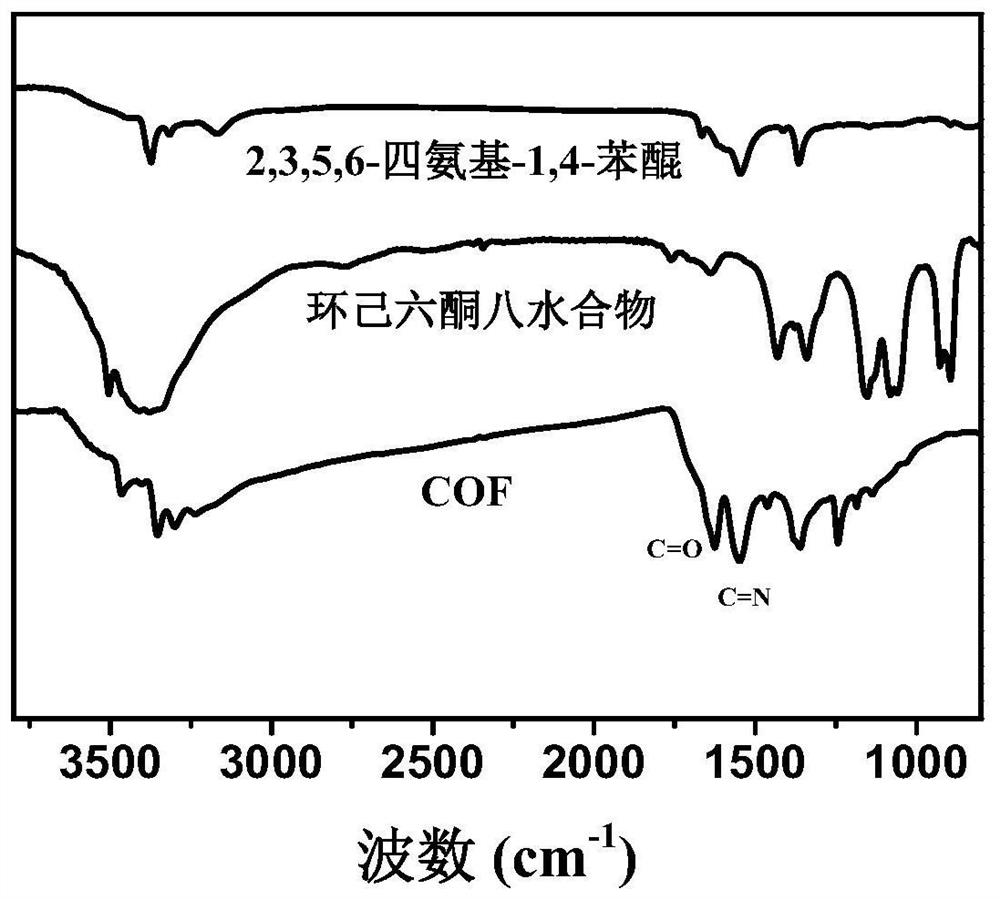Covalent organic framework material, preparation method thereof and application of covalent organic framework material in lithium ion battery
A covalent organic framework, lithium-ion battery technology, applied in battery electrodes, secondary batteries, circuits, etc., can solve problems such as inability to meet practical applications, rate performance limitations, low conductivity, etc.
- Summary
- Abstract
- Description
- Claims
- Application Information
AI Technical Summary
Problems solved by technology
Method used
Image
Examples
preparation example Construction
[0068] In a specific embodiment, the preparation method further includes a step of extracting the reactants after the reaction of 3,5,6-tetraamino-1,4-benzoquinone and cyclohexanone or its hydrate is completed. For example, to extract the reactants, Soxhlet extraction can be used. For example, after the reaction is completed, the resulting mixture can be cooled to room temperature, and then methanol is added to precipitate a solid, which is collected by filtration, extracted by Soxhlet, and dried in vacuum to obtain the final product.
[0069] In a particularly specific embodiment, the covalent organic framework material is prepared by adding 2,3,5,6-tetraamino-1,4-benzoquinone and cyclohexanone octahydrate to three ports under the protection of argon Place in an ice bath, then slowly add a solvent and a small amount of catalyst, then return to room temperature for reaction, then change the ice bath to an oil bath, heat the reaction, then cool to room temperature, add methanol...
Embodiment 1
[0085] Synthesis of Example 1 Covalent Organic Framework Material 1
[0086] Under argon protection, 504 mg (3 mmol) of 2,3,5,6-tetraamino-1,4-benzoquinone (according to Z.Luo, L.Liu, J.Ning, K.Lei, Y.Lu , F.Li and J.Chen, A Microporous Covalent-Organic Frameworkwith Abundant Accessible Carbonyl Groups for Lithium-Ion Batteries, synthesized by the method described in Angew.Chem.Int.Ed.57(2018) 9443-9446.) and 624mg ( 2mmol) cyclohexanone octahydrate (purchased from Aladdin Reagent Company) was added in a 50ml there-necked flask, placed in an ice bath, slowly added 15ml N-methylpyrrolidone and a few drops of sulfuric acid, then returned to room temperature, and reacted After 3 hours, change to an oil bath, raise the temperature to 65°C, and react overnight for 24 hours. Then the reaction flask was cooled to room temperature, methanol was added, and the solid precipitate was collected by filtration, further extracted with water, ethanol, and acetone by Soxhlet, and vacuum-dried...
Embodiment 2
[0087] Synthesis of Example 2 Covalent Organic Framework Material 2
[0088] Under argon protection, 504mg (3mmol) of 2,3,5,6-tetraamino-1,4-benzoquinone and 624mg (2mmol) of cyclohexanone octahydrate were added to a 50ml three-necked flask, In an ice bath, slowly add 15ml of N-methylpyrrolidone and a few drops of sulfuric acid, then return to room temperature, react for 3h, then change to an oil bath, heat to 65°C, and react overnight for 12h. Then the reaction flask was cooled to room temperature, methanol was added, and the solid precipitate was collected by filtration, further extracted with water, ethanol, and acetone by Soxhlet, and vacuum-dried at 80° C. for 12 hours to obtain product 2 as a black solid.
PUM
| Property | Measurement | Unit |
|---|---|---|
| Energy density | aaaaa | aaaaa |
Abstract
Description
Claims
Application Information
 Login to View More
Login to View More - R&D
- Intellectual Property
- Life Sciences
- Materials
- Tech Scout
- Unparalleled Data Quality
- Higher Quality Content
- 60% Fewer Hallucinations
Browse by: Latest US Patents, China's latest patents, Technical Efficacy Thesaurus, Application Domain, Technology Topic, Popular Technical Reports.
© 2025 PatSnap. All rights reserved.Legal|Privacy policy|Modern Slavery Act Transparency Statement|Sitemap|About US| Contact US: help@patsnap.com



